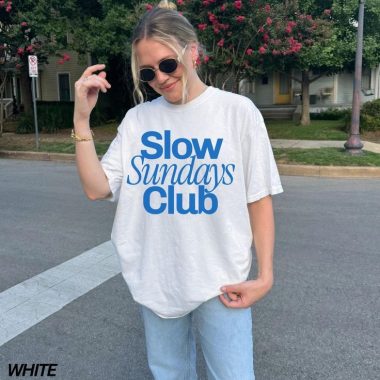Introduction
Fashion is an eloquent language spoken through fabric, color, and silhouette. It is both a reflection of our collective past and a manifesto for the world we wish to inhabit. Far from a frivolous pursuit, fashion serves as a living chronicle—tracing the contours of history, charting the currents of societal change, and offering individuals a palette for self-definition. In this expansive examination, we delve into the profound origins of attire, the cultural and symbolic dimensions of dress, the psychology of personal style, the seismic impact of technological innovation, the imperative of sustainability, the dynamics of global exchange, the economic engines that drive the industry, and the bold frontiers that lie ahead. Through this journey, we will reveal how fashion remains an ever‑evolving tapestry, interwoven with artistry, ethics, and ingenuity.
Ancient Beginnings and the Birth of Ornamentation
Long before haute couture and high‑street chains, our ancestors grappled with the primal need for protection and the instinct to adorn. Early hominids draped themselves in animal hides, woven reeds, or layered skins, responding to climatic challenges with ingenuity born of necessity. Yet even in these rudimentary coverings, the impulse to embellish was evident. The first adornments—shell necklaces, carved bones, ochre‑dipped fabrics—hinted at a burgeoning aesthetic consciousness. These early decorations transcended mere survival, serving as talismans for fertility, status markers within fledgling tribes, and conduits for spiritual expression. As settlements took root, loom technologies emerged, transforming fibers into threads and threads into textiles. Weaving became both utilitarian craft and artistic pursuit. Patterns and dyes—once rare and arduous to produce—began to denote social rank and trade alliances, weaving a silent code understood by initiates across vast distances. In these formative centuries, attire blazed the trail for an enduring union of function and beauty.
Garments as Cultural Narratives
Across the globe, traditional attire encapsulates stories of place, belief, and lineage. In the high plateaus of Tibet, resplendent robes echo ancient iconography, their intricate brocades recounting the interplay between humanity and the transcendent. In the Saharan oases, Tuareg indigo garments serve both practical and symbolic roles, shielding against sun’s glare while signaling communal identity. The Inuit’s fur‑trimmed parkas and mukluks speak of elegant adaptation to extremes, their seams and cuts calibrated by generations of empirical knowledge. Meanwhile, Mayan huipils and Guatemalan cortes preserve motifs dating back to pre‑Columbian civilizations, each motif named for a sacred mountain or ancestral tale. These garments are not relics; they are living art forms continually revitalized by contemporary wearers who honor traditions while infusing new meanings. Through ceremonial robes, everyday tunics, and festive costumes, cultures transcribe their collective memory onto the human form—each stitch an indelible verse in the epic of identity.
The Semiotics of Dress and the Psychology of Style
Clothing is potent semiotics—an unspoken dialogue between the wearer and the world. When an individual selects an ensemble, they articulate aspirations, moods, and affiliations without a single utterance. A sharply tailored jacket may convey authority and precision; flowing silks might evoke sensuality or creative freedom. Color psychology plays its part: the boldness of crimson suggests confidence and passion, while muted earth tones whisper of introspection. Fabric choices resonate too—textured tweeds impart warmth and tradition, while lustrous satins radiate modern elegance. Beyond the garments themselves, the ritual of dressing embeds meaning. In adversities and triumphs alike, people anchor to signature styles: a particular hat recalls childhood summers, a well‑worn leather jacket channels past rebellions. Fashion thus becomes a form of externalized memory, a daily performance in which the self is both constructed and revealed. Psychologists note that clothing can even influence mood and behavior—a concept known as “enclothed cognition”—underscoring the profound interplay between our outer shells and inner lives.
Revolutionizing Mass Production: The Industrial Catalyst
The nineteenth century’s mechanization of spinning and weaving marked a seismic shift from handcrafted exclusivity to industrial ubiquity. Steam‑powered looms and sewing machines birthed the ready‑to‑wear market, democratizing style but also commodifying it. Garment factories swelled with workers, and department stores emerged as cathedrals of consumption. Fashion’s cycles accelerated as magazines and pattern catalogs disseminated the latest looks to a growing middle class. Yet this newfound accessibility sparked tensions: mass production often sacrificed bespoke detail for efficiency, and fleeting trends fueled a throwaway mentality. The consequence was both cultural homogenization and economic expansion. Designers responded by emphasizing artisanal flourishes—hand‑stitched seams, custom linings—that distinguished luxury offerings. Over time, haute couture and ready‑to‑wear forged a symbiotic relationship: pioneering couture houses would influence street‑level trends, which in turn fed back into designer collections. Thus, the industrial revolution did not diminish fashion’s artistry but reshaped its landscape, weaving a more complex fabric of creativity and commerce.
The Digital Age: Virtual Runways and Smart Textiles
In the twenty‑first century, digital technologies have reset fashion’s boundaries. Virtual runways streamed across continents, allowing audiences in Tokyo, Lagos, and São Paulo to experience Parisian collections in real time. Social media platforms democratized critique, empowering influencers and subcultures to challenge established hierarchies. On the production side, 3D printing enables designers to craft intricate embellishments and custom‑fit garments without cutting a single yard of cloth. Smart textiles embedded with microprocessors monitor biometric data, adjusting thermal properties or alerting wearers to health anomalies. Nanocoatings render fabrics self‑cleaning or water‑repellent, reducing laundering needs and extending garment lifespans. Augmented reality fitting rooms let shoppers overlay digital garments onto live video, eliminating guesswork and returns. Blockchain traceability ensures provenance can be authenticated from raw fiber to retail rack. As physical and virtual wardrobes converge, consumers navigate a hybrid marketplace in which clothing is both tangible and coded, and style evolves through firmware updates as much as seasonal lines.
Ethical Imperatives and the Rise of Conscious Consumption
The environmental toll of traditional fashion practices has become impossible to ignore. Textile dyeing is one of the most chemically intensive processes on the planet, and water usage for cotton cultivation can span thousands of liters per garment. Fast‑fashion models that introduce multiple “drops” per season have conditioned consumers to churn through wardrobes in months, generating staggering landfill volumes. In response, a paradigm shift toward ethical production and conscious consumption has emerged. Regenerative agriculture revives soil health in fiber fields, while closed‑loop dye houses capture and recycle water and pigments. Artisan collectives receive fair compensation for traditional crafts, ensuring cultural techniques endure and livelihoods are uplifted. Rental services and clothing‑swap platforms extend the life of garments, decoupling style from ownership. Upcycling initiatives transform discarded materials into statement pieces, redefining waste as a creative resource. Transparency initiatives—supply chain audits, QR‑coded labels—allow consumers to verify that what they wear upholds their values. Through these reforms, fashion is poised to harmonize its creative fervor with the imperatives of ecological balance and social justice.
Globalization, Cultural Exchange, and the Ethics of Inspiration
In an interconnected world, fashion trends traverse borders with unprecedented speed. A print inspired by indigenous Australian art can surface on a runway in Milan within weeks; streetwear born in Brooklyn collides with Afrobeat aesthetics in Lagos; South Korean K‑pop stylings influence Tokyo street fashion, creating a global pulsing rhythm of remix and reinvention. This cultural osmosis has enriched wardrobes and empowered cross‑continental collaborations. Yet it also surfaces questions of appropriation: when symbols sacred to a community are repackaged without credit or consent, the exchange becomes exploitative. Ethical inspiration demands reciprocity—collaborators must engage originators as equal partners, share economic benefits, and honor the context of their inspirations. Some brands have forged equitable alliances: master weavers from remote villages partner with international designers, sharing royalties and storytelling platforms. Such models chart a path to genuinely global fashion, where cultural exchange uplifts origin communities rather than erasing them.
Economic Forces and the Dynamics of Fashion Capital
The global fashion industry commands a multitrillion‑dollar economy, encompassing raw fiber markets, textile mills, design houses, wholesalers, retailers, and digital marketplaces. Emerging economies like Vietnam, Bangladesh, and Ethiopia have become vital nodes in manufacturing, offering cost advantages that attract international investment. Yet dependence on low‑wage labor has sparked debates over fair wages and labor rights. Conversely, luxury hubs in Paris, Milan, and New York anchor high‑end segments, leveraging brand heritage and craftsmanship to command premium prices. E‑commerce platforms from Amazon to boutique digital marketplaces intensify competition, erasing geographic constraints but raising the bar for customer experience and logistics. Data analytics guide merchandising decisions, predicting demand patterns and optimizing inventory. Seasonal calendars—once dictated by weather cycles—now respond to algorithmic signals and micro‑trends identified on social media. In this fluid ecosystem, agility is paramount: brands that master supply chain responsiveness and ethical stewardship stand to thrive, while those clinging to outdated models risk obsolescence.
The Social Dimension: Fashion as Activism and Community
Fashion has repeatedly emerged as a megaphone for social causes. In the early twentieth century, suffragettes employed specific color palettes in their attire to unify their messages. During civil rights and anti‑war movements, T‑shirts and buttons broadcasted demands for justice. Today, runway shows spotlight models of diverse sizes, ages, and abilities; campaigns feature neurodiverse creatives and LGBTQ+ advocates. Designers weave statements against climate inaction into their collections, partnering with environmental NGOs to donate proceeds or reduce carbon footprints. Grassroots communities gather around sustainable swap shops, repair cafés, and local sewing circles that reclaim agency over consumption. Online forums host style challenges that encourage upcycling and mindful curation, transforming fashion into participatory activism. Through these channels, clothing becomes more than adornment—it becomes a banner for solidarity, a vehicle for collective empowerment.
The Horizon Ahead: Hybrid Realities and Personalized Wardrobes
As we peer into the next decade, the contours of fashion continue to morph. Virtual reality boutiques will offer entirely immersive shopping experiences, where avatars can trial garments in fantastical settings. Non‑fungible tokens (NFTs) will authenticate limited‑edition digital wearables that confer status in online realms and metaverses. Artificial intelligence stylists will curate capsule wardrobes tailored to individual lifestyles, climates, and sustainability goals, ordering new garments just in time to replace worn items. Bioengineered fabrics grown from yeast or bacterial cellulose promise renewable textiles with zero landfill footprint. Distributed micro‑factories embedded in urban centers could 3D‑print custom garments on demand, slashing transportation emissions. Meanwhile, policy interventions—extended producer responsibility mandates, carbon taxes on textile manufacturing, labor regulations—will shape industry practices. In this hybrid future, the line blurs between physical and digital expression, and the question of “What shall I wear today?” transforms into “What identity shall I inhabit?” across multiple realities.
Conclusion
Fashion’s journey is a testament to human creativity, resilience, and aspiration. From the first stitched hides to the coded fabrics of tomorrow, our garments chronicle the arc of civilization. They carry narratives of heritage, articulate personal identities, and mirror societal shifts. As technology accelerates and the planet signals urgent alarms, the industry stands at a pivotal juncture. By embracing sustainable practices, honoring cultural origins, and pioneering innovations that uplift both people and ecosystems, fashion can chart a course that uplifts rather than exploits. In the tapestry of tomorrow, each thread—be it artisanal silk, smart textile, or digital construct—will weave together the story of who we are and who we dare to become. The future of fashion beckons us to dress not only for the moment but for the world we wish to leave behind.



